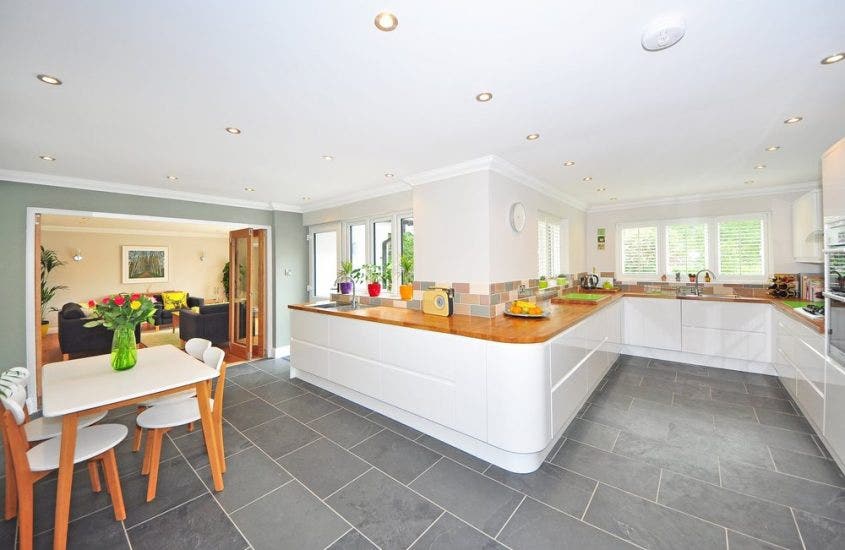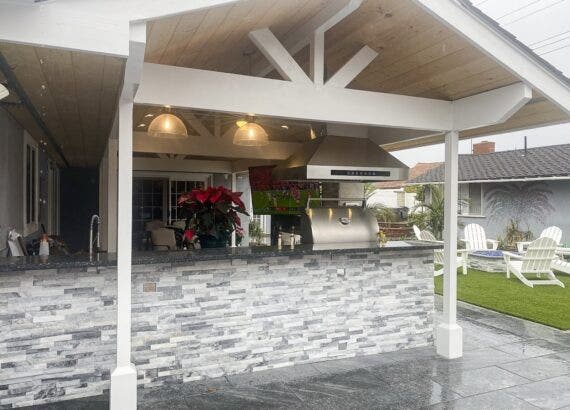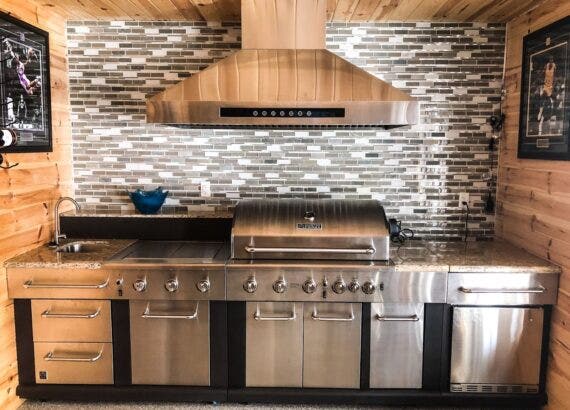8 Home Building Tips That Save You Time and Money

Guest post by Rose Morrison from Renovated.com
Over the past decade, builders have erected about 7 million single-family homes. Meanwhile, homeowners have invested $1.5 trillion in remodeling projects.*
If you and your family are looking to invest in your home too, it’s wise to start saving now. Custom builds and remodels are expensive. Not to mention that most people have budgets with very little wiggle room.
Even on a tight budget, these eight tips will help you save time and money on your home improvement project this year.
Table of Contents
1. Hire a Competent Contractor
As you search for a contractor, don’t take the lowest bid immediately. Keep in mind that the one with the lowest bid may also stick you with delays and poor workmanship. So, unless they can justify the low offer, you may want to choose someone who will charge more. As long as they know what they’re doing, it may save you money in the long run.
Tip: Ask friends and neighbors if they have used contractors that they would use again. Local groups on sites like Facebook make this easy.
2. Pick an Aesthetic That Aligns With Your Budget
During the design period, consider the aesthetic of your future home. Industrial design or a minimalist look will cost less, while farmhouse design and bohemian design can be more expensive.
With interior design, often less is more. You’d be surprised how complete your home can look with a harmonious color scheme and a few pieces of furniture. So, rather than spending money on luxurious upgrades, start by picking an aesthetic.
3. Build in the Fall
When building a single-family home, pay attention to the weather.
If you aren’t working under a strict timeline, you may enjoy building in the fall. It’s more affordable to begin your project in autumn. In the fall, there’s less demand for supplies and contractors. This strategy works well for small homes and larger building crews.
But, if you can afford it, spring and summer are ideal for building due to the great weather.
4. Choose Affordable Underlayment
When it’s time to choose the roofing material, you have many things to consider. Deciding between clay tiles and asphalt shingles isn’t the only decision you’ll have to make. Beneath this layer, there’s another layer of asphalt-saturated felt, synthetics, or rubberized asphalt.
If you want to save money, asphalt-saturated felt is your best option. This material is the oldest type of underlayment. It’s readily available across the U.S. It’s also strong, reliable, and water-resistant, so you won’t have to compromise on quality.
5. Do It Yourself
You don’t have to be a professional architect or handyman to do a few projects yourself. From installing hardware and appliances to staining wooden beams, doing smaller tasks on your own can cut costs and save you time. If you don’t finish something before the contractor completes your home, you can always save the project for a rainy day.
YouTube is an easy way to learn some new skills or get the confidence to take on a new project. You can watch people complete a task from start to finish and learn from their mistakes.
6. Source and Salvage Materials
Most contractors can secure lower prices on bulk materials. But, you’re always free to buy your own. Often, you’ll find cheaper appliances and furniture items from large retailers or liquidation sales. You might also salvage scraps from your own home build and use them to make shelves, frames, or other items. Salvaging might end up saving you money and several trips to the home decor store.
7. Think Small and Open
The bigger the home, the more costly it is to build. So, it’s in your best interest to keep the floor plan small and simple. Focus on what you need and omit what you don’t. For instance, you probably need a wall to separate your bedroom from the living room. But, you won’t need walls to section off every area of your home.
Opting for open space will simplify the building and design process and reduce costs.
8. Apply for Tax Credits
The federal government might also be able to help you cut the cost of building a new home. The Internal Revenue Service offers tax credits to first-time buyers looking to build. They also offer solar energy credits if you add this renewable system to your house.
If you are your own contractor, you may also enjoy an energy-efficiency tax credit. This awards up to $2,000 to those who build eco-friendly homes.
Knowing When to Splurge
Cutting costs is one thing, but cutting corners is another. When it comes to building or renovating your home, you must know when to splurge and when not to. Otherwise, you may end up spending as much on renovations down the line when the shoddy workmanship doesn’t hold up.
Thanks for reading our eight home building tips that save you time and money. For more home improvement advice, check out our articles below.
*Housingwire.com Study – How many homes were built in the last decade?
Related Articles
Whole Home Remodel – Where to Start







Comments are closed.